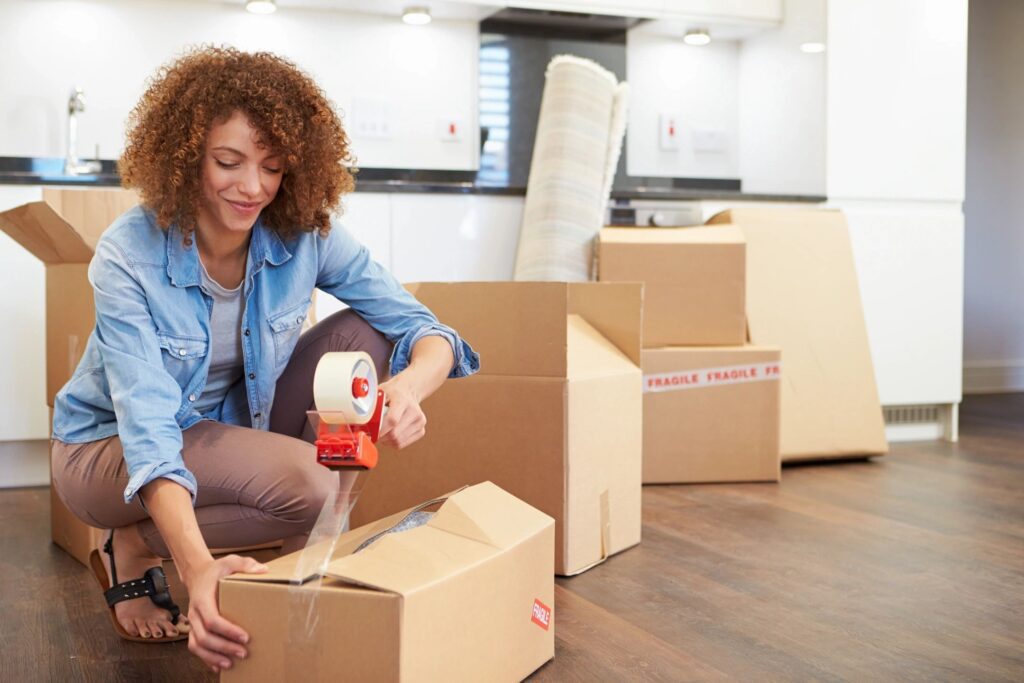6 Expert Tips on Packing for a Move
Packing for a move can feel overwhelming, especially if you’re handling it yourself. Whether you’re moving across the state or across the country, a little organization and the right strategy can save hours of stress (and plenty of broken dishes).
At Moving Truck Driver, we’ve helped thousands of people relocate safely and efficiently. These are the same expert packing tips our professional drivers and movers use every day from simple, practical, and guaranteed to make your move smoother.

1. Prepare Like a Pro: Gather the Right Materials
The right supplies make all the difference between a smooth move and a chaotic one. Professional movers use durable, purpose-built materials and not old grocery boxes or cheap tape that splits under pressure.
Before you start, stock up on:
-
Heavy-duty boxes in various sizes
-
Quality 2" packing tape and a dispenser
-
Butcher paper or unprinted newsprint (avoid newspaper ink)
-
Permanent markers (multiple colors for labeling by room)
-
Scissors and utility knives
-
Stretch wrap for furniture and cords
-
Mattress bags, mirror boxes, and bubble wrap
Next Level Tip: Use color-coded labels for each room — red for kitchen, blue for bedrooms, green for bathrooms, etc. It’ll make unloading a breeze.
2. Pack Early and Don’t Rush the Process
The number one mistake people make? Waiting too long to start.
Packing always takes longer than expected, especially for large homes. Begin several weeks before your move and follow a room-by-room plan.
Professional timing tips:
-
Start with low-use areas (garage, attic, basement).
-
Pack off-season clothes and decor first.
-
Schedule 2–3 rooms per week for bigger homes.
-
Keep daily essentials separate (toothbrush, clothes, documents).
-
Use sturdy boxes, and keep them under 40 lbs each.
Next Level Tip: Create a “Go Box” for essentials like phone chargers, toiletries, medication, and important paperwork — it should ride with you, not the movers.
.
Request A Quote
3. Choose the Right Moving Boxes
Each type of box has a specific purpose. Using the right one reduces damage and makes loading easier for your driver.
| Box Type | Best For | Why It Matters |
|---|---|---|
| Wardrobe Cartons | Hanging clothes, coats | Keeps garments wrinkle-free |
| Dish Barrels | Fragile kitchenware | Extra-thick walls prevent breakage |
| Mirror Cartons | Mirrors, artwork, frames | Adjustable fit for protection |
| Small Boxes | Books, tools | Keeps weight manageable |
| Medium Boxes | Pots, small appliances | Versatile everyday use |
| Large Boxes | Linens, pillows | Light items that take space |
| Double-Wall Boxes | Glassware, antiques | Maximum strength for long trips |
Next Level Tip: Double-wall boxes are ideal for long-distance moves. They resist crushing and temperature changes better than single-ply cartons.
4. Label Everything Clearly
When you’re unpacking after a long drive, good labeling is your best friend. It keeps movers, and you. organized and prevents fragile items from getting misplaced.
Smart labeling tips:
-
Label every side of the box, not just the top.
-
Write the room name, contents, and unpacking order.
-
Use arrows and “This Side Up” for delicate items.
-
Mark boxes as FRAGILE when needed.
-
Keep a digital checklist (Google Sheets works great) to track every box.
Next Level Tip: Use painter’s tape or colored stickers to create a visual “room map.” When unloading, anyone can tell where each box belongs.
5. Know What NOT to Pack
Some things just don’t belong in a moving truck, for your safety and your driver’s.

-
Flammable liquids (gasoline, lighter fluid, paint thinner)
-
Fireworks, matches, or propane tanks
-
Aerosols or compressed gases
-
Perishable food items
-
Nail polish remover or alcohol-based cleaners
-
Hazardous automotive fluids
Next Level Tip: Check local disposal options before move day. Most waste facilities accept hazardous materials for free and don’t risk a fine or fire hazard.
6. Use Professional Packing Techniques
Packing isn’t just about fitting items into boxes, it’s also about protecting them through hundreds of miles of bumps, turns, and temperature swings.
Follow these expert rules:
-
Pack heavier items on the bottom, lighter ones on top.
- Choose the right size U-Haul for your move.
-
Pad empty spaces with towels or blankets.
-
Wrap screws and small hardware in labeled bags.
-
Coil cords and secure them with twist ties or tape.
-
Stack boxes so the heaviest are closest to the truck floor.
-
Always tape boxes closed flat: bulging tops mean improper packing.
Next Level Tip: Think of each box as its own mini puzzle - if it’s firm when shaken, it’s packed correctly.
Need a Hand?
If you’re renting a U-Haul or Penske truck but don’t want the stress of driving it yourself, hire a professional moving truck driver. We handle the miles while you handle the move, safely, efficiently, and nationwide.
Packing FAQs
Start with storage areas and low-use rooms. Save your bedroom, kitchen, and daily items for last.
It’s better to remove and pack them separately to avoid breaking dresser drawers.
Yes, if possible. Remove table legs, unscrew bed frames, and label all parts in small bags.
For most households, allow 2–3 weeks. Rushing leads to mistakes and breakage.
Final Tip: Let the Pros Drive
Packing is hard enough, the driving doesn’t have to be.
Our licensed, insured U-Haul drivers can take your loaded truck anywhere in the U.S., giving you peace of mind while you travel comfortably.